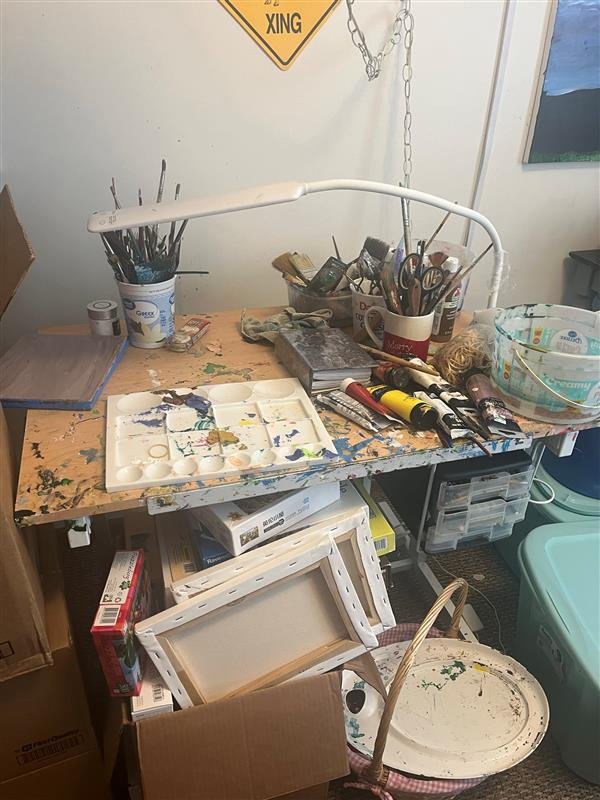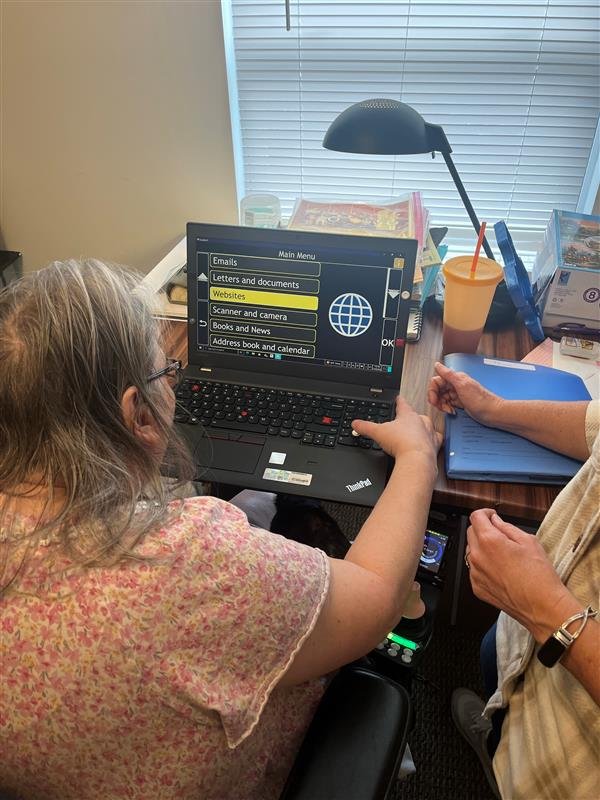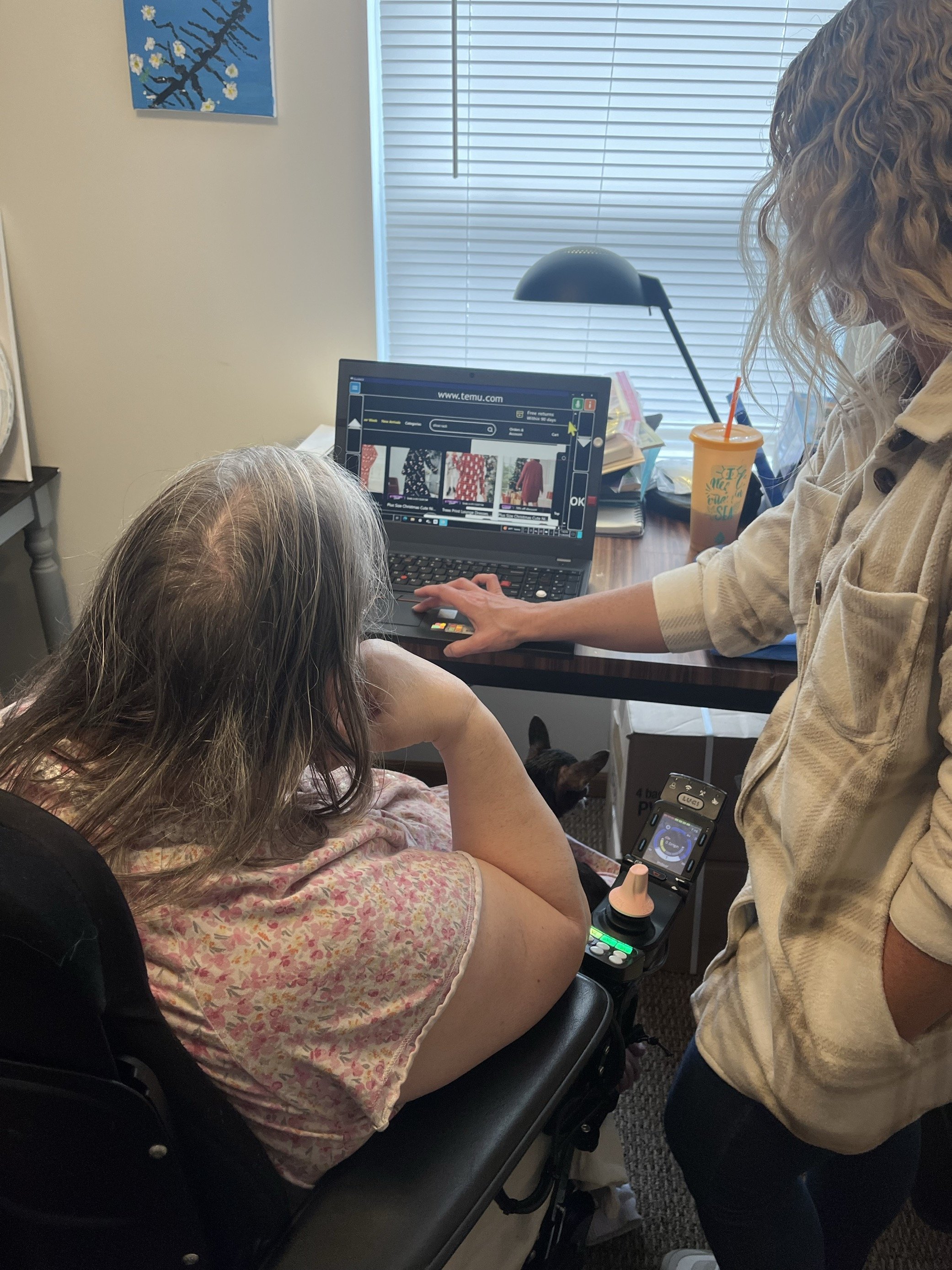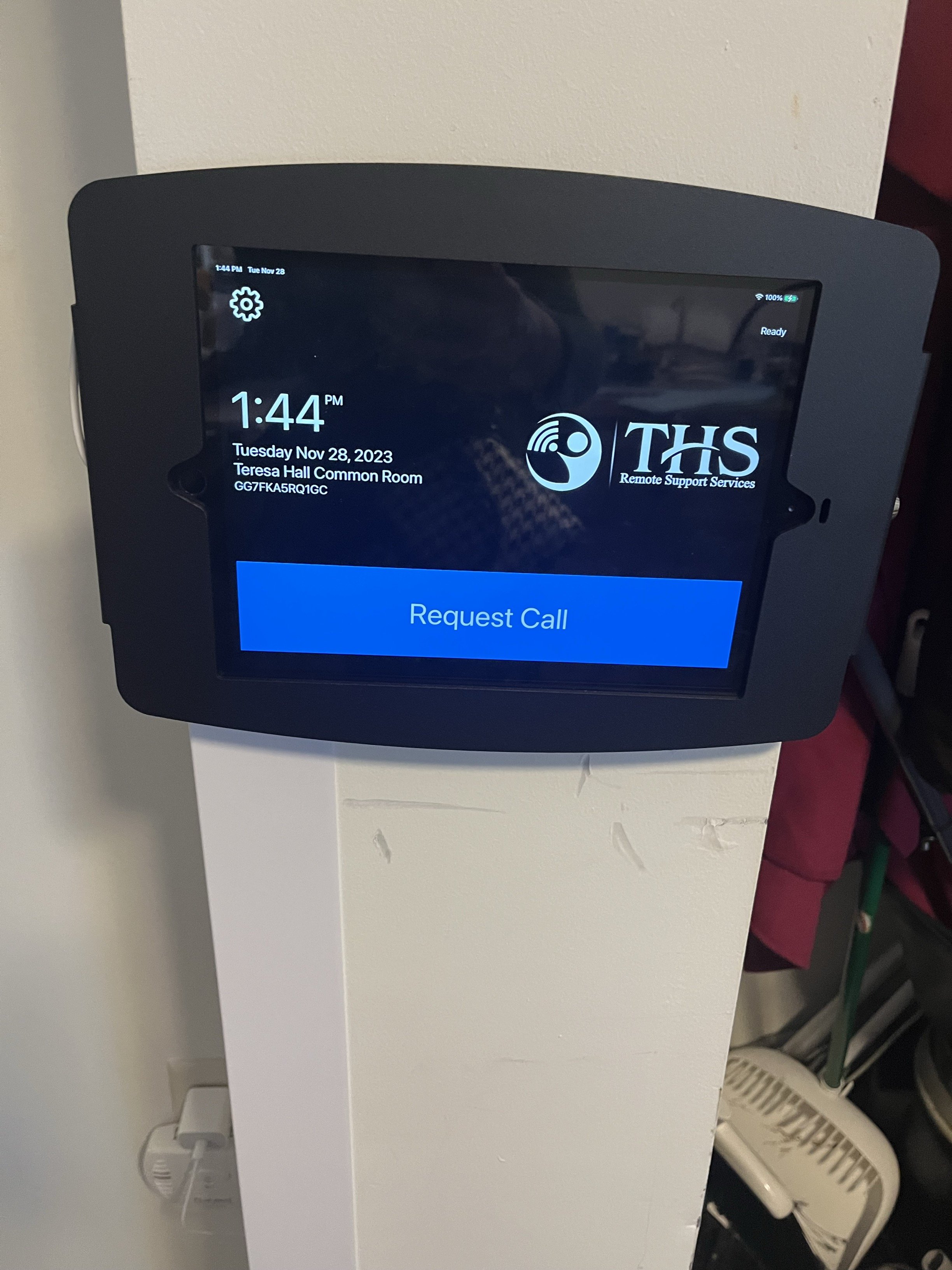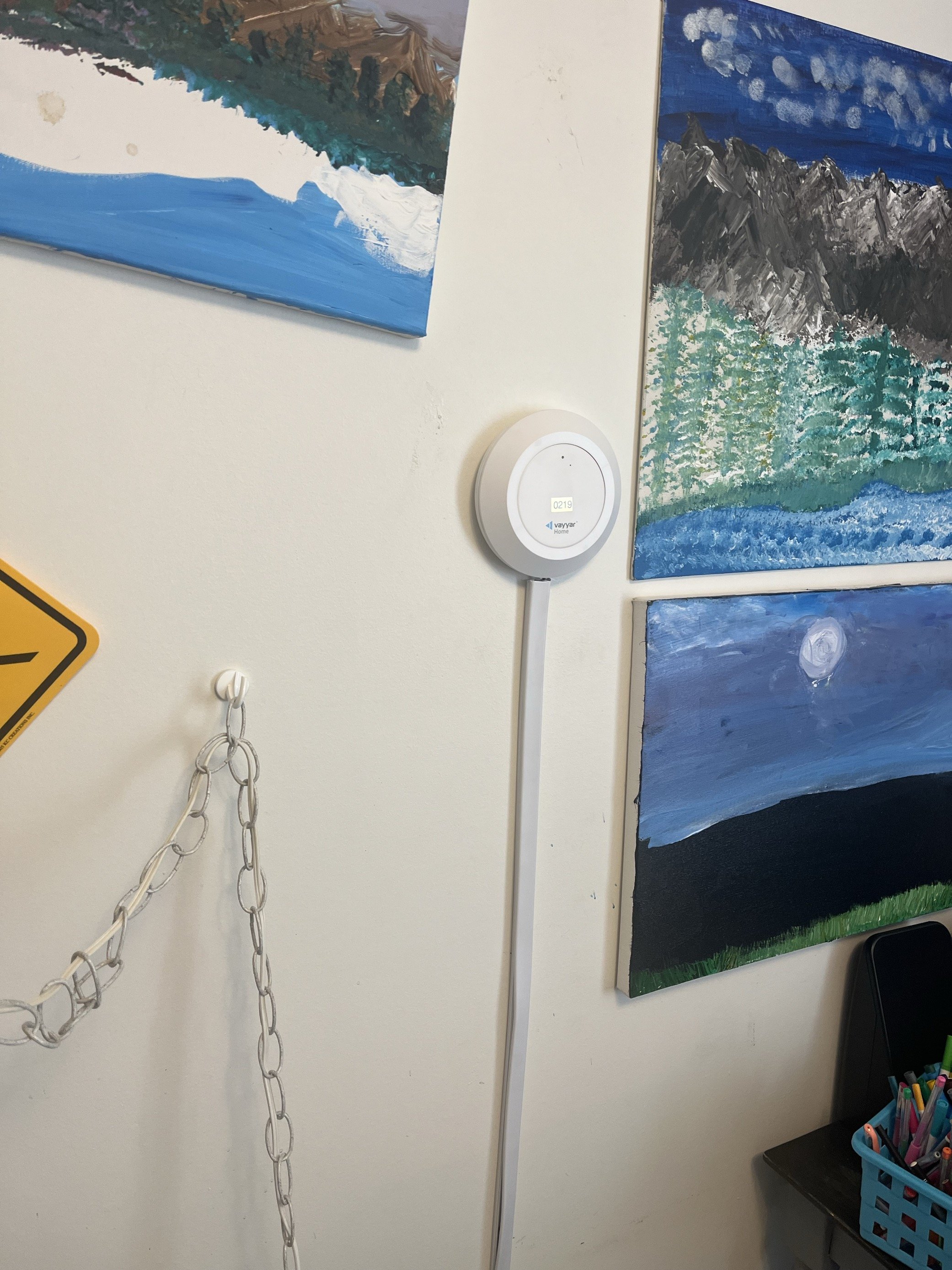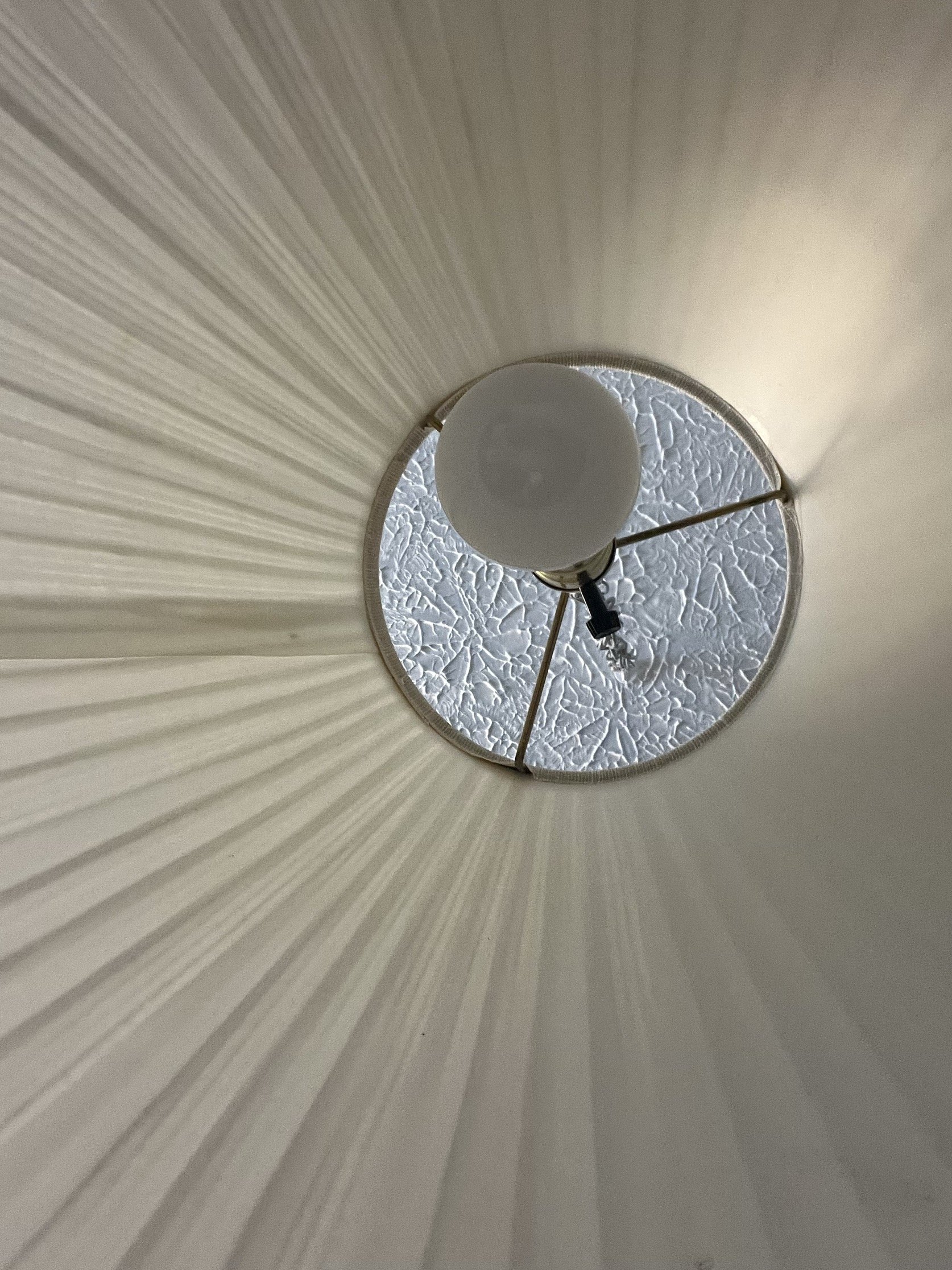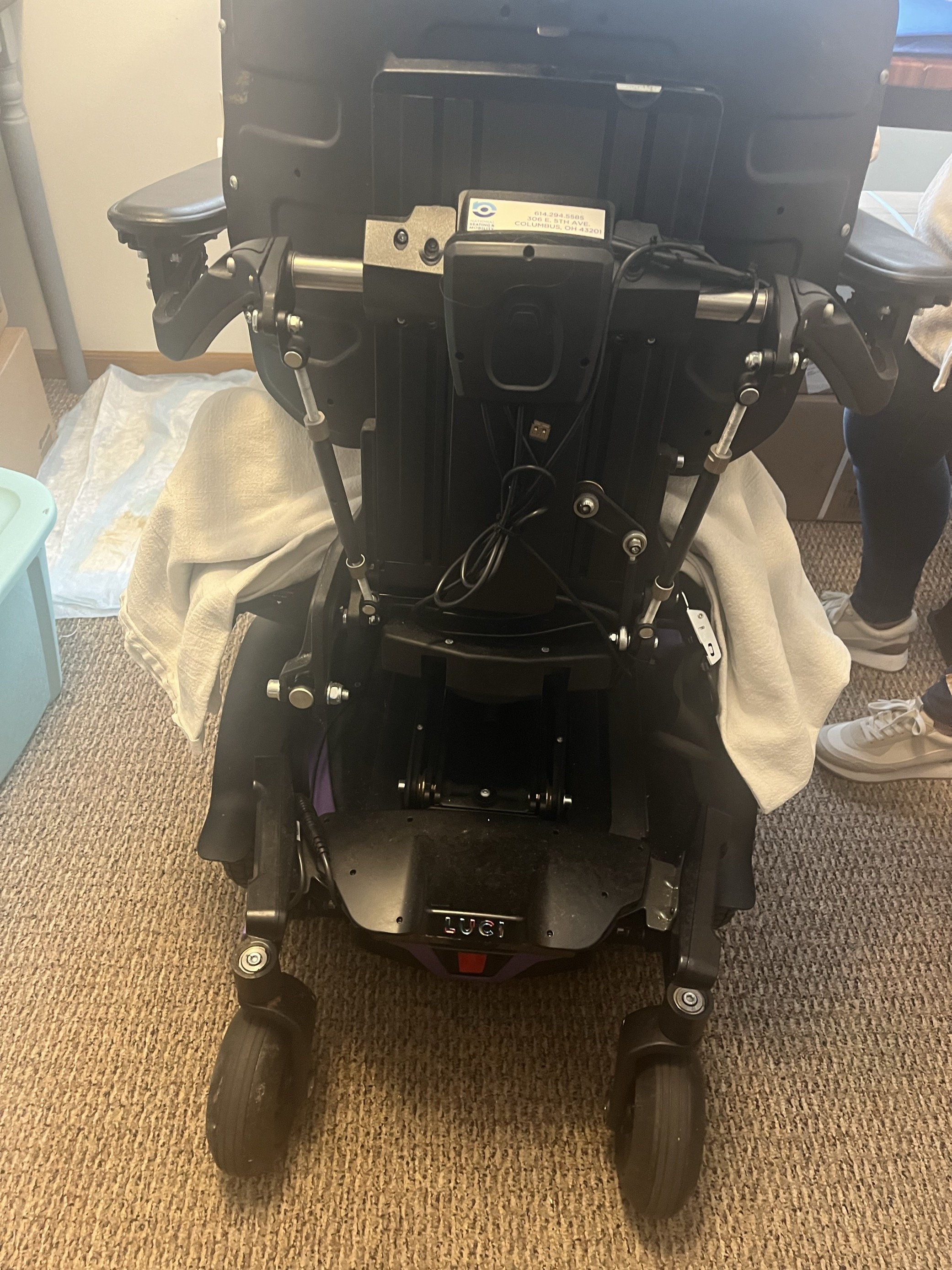Teresa Hall
Teresa Hall loves art and painting. In her workroom, her landscapes hang on many of the walls.
A few years ago, when Teresa learned she was losing sight in her right eye, she was determined to do what she could to maintain her hobbies and her independence. She is meeting this goal with the help of technology.
Smart lightbulb
Teresa uses many different devices throughout the day. She speaks to Alexa to turn on and off her lights using smart lightbulbs. When using her laptop, she has raised physical buttons and a computer program to help her navigate.
Screen Enlargement
The program enlarges and simplifies the text and can also read it aloud. It helps her do everything from electronic banking to Amazon shopping. Teresa downloads audiobooks so she can continue to read. At the end of the month, when her rent is due, she uses a 3-D printed signature guide model to help her sign checks allowing her to maintain her financial privacy.
Remote Support
Due to mobility and sight issues, Teresa has someone in her apartment to assist, but she wanted some privacy and alone time. She now uses remote support 4-5 hours each day. She wears a monitor that senses if she falls and if she does, the company would contact her to check in or notify her emergency contact. When home alone, sensors, like sonar, are monitored by an offsite company. If the system detects something out of the ordinary, a person will speak to Teresa through the 2-way talking. If she didn’t respond, they would dispatch emergency medical staff.
Sensors System
Teresa uses a power wheelchair to move around her apartment building and the community when she visits friends or heads to Bible study. To ensure she can continue to do this without help, Teresa uses a sensor system attached to her wheelchair. It alerts and stops her chair if she comes near a barrier such as a wall, furniture, steps, or curbs.
Technology does have its struggles because things can become disconnected, or settings changed. Teresa faces these challenges head-on. When asked about how she felt about all these new tools, she said that she was scared when first learning about her eyesight but continues to be amazed at all the technology now available and hopes to keep using it to allow her some alone time and her independence.
If you would like to expand your independence or help someone else through technology, but don’t know where to start, please reach out to Lori Ferbrache, Assistive Technology Coordinator, and she will be happy to assist you in the process.
